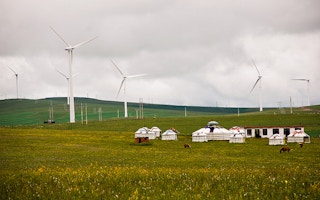A new carbon pricing tool released last month by sustainability research and advisory firm Trucost aims to help corporations lower their investment risks amid changing carbon regulations.
To continue reading, subscribe to Eco‑Business.
There's something for everyone. We offer a range of subscription plans.
- Access our stories and receive our Insights Weekly newsletter with the free EB Member plan.
- Unlock unlimited access to our content and archive with EB Circle.
- Publish your content with EB Premium.
The Global Carbon Pricing Tool compiles a catalogue of current carbon taxes, emissions trading schemes, and fuel taxes from 130 cities, regions and countries.
It also factors in three future carbon pricing scenarios as these geographies deliver on their commitments to the Paris Agreement to lower carbon emissions and limit global warming to 2C or less.
This data set, assessed against a company’s own greenhouse gas emissions and investment portfolio, provides insights on the company’s carbon pricing risks from now to 2030.
The result is an evidence-based guide that helps companies lower their financial exposure—or how much their investment could lose—if they continued with business as usual.
The tool, which has a demo version that can be accessed online, also helps companies better understand the business opportunities in renewable energy, resource efficiency and other similar product strategies that are emerging as a result of these regulatory shifts.
“
The Carbon Pricing Tool can help businesses in Asia Pacific understand the magnitude and timing of the financial implications and make the business case for investing in greener technology.
Libby Bernick, global head of corporate business, Trucost
Libby Bernick, global head of corporate business for Trucost, said that because regulations could drive up the cost of fossil fuel-based energy and carbon-intensive raw materials, companies have been trying to make sense of how they can lower their financial exposure.
“Companies need robust data and analytics to help inform financial decisions over investments in energy-efficiency, low-carbon innovation, and renewable energy,” she added.
Help for businesses in Asia Pacific
Carbon regulations are changing rapidly around the world, and this is also true in Asia Pacific.
Singapore has announced that it will start to tax power producers for each tonne of carbon they release starting 2019, in what is the first national carbon pricing scheme introduced in Southeast Asia.
China is also creating a national emissions trading system building on seven existing national carbon trading markets. This push to introduce a carbon pricing scheme could catalyse widespread carbon pricing in other countries and could disrupt the market, say industry observers.
“Companies that operate in more than one region or have different types of business activities will be affected by these new and emerging requirements in different ways,” Bernick warned.
“The Carbon Pricing Tool can help businesses in Asia Pacific understand the magnitude and timing of the financial implications and make the business case for investing in greener technology,” she told Eco-Business.
Bernick added that since its beta launch on August 15, companies that used the tool reported its benefits, highlighting that quantitative data on current and estimated future changes to their operating costs and margins, either for one business unit or those operating several branches, were very helpful.
Companies also said that the data also allowed them to benchmark against competitors.
Carbon pricing’s promise
In addition to allowing businesses to manage financial risks, experts say carbon pricing also helps countries transition to a low carbon economy and mitigate climate impacts.
Carbon pricing, which transfers the social costs of climate change to the source of pollution, and, as a result, encourages polluters to reduce emissions and shift to low-carbon growth and clean energy, is a key element in the global transition to a low-carbon economy, according to the International Carbon Action Partnership (ICAP).
ICAP is, an international forum for governments and public authorities that have implemented or are planning to implement emissions trading systems (ETS). On September 1, ICAP organised a gathering in Lisbon, Portugal for national leaders to share their experiences and best practices in carbon market policy.
Among those in attendance was Germany’s environment minister Barbara Hendricks, who said that many countries are reaffirming their partnership commitments to implement a global carbon pricing and emission trading system.
“Carbon pricing looks set to fulfil its promise in cost-efficiently delivering ambitious emissions cuts for the post-Paris era,” Hendricks said.










